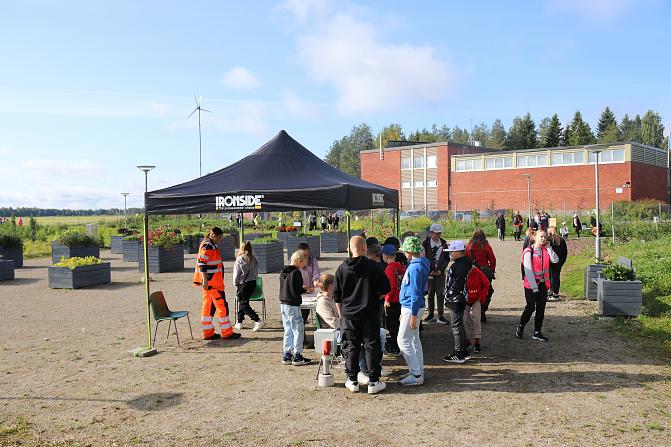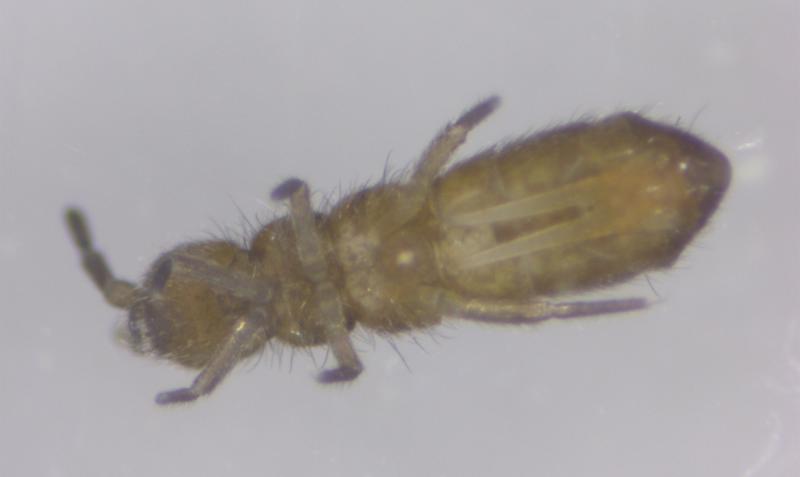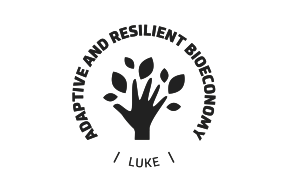Environmental Education in the Lap of Nature
We organized environmental education events simultaneously in Tervola, Lapland, and Jokioinen, Häme, where school classes got to explore natural resource themes. In Tervola, we welcomed 200 elementary school students from Keminmaa, and in Jokioinen, a total of 1350 young students from nearby schools. But how did the researchers manage this challenge?

Life in the Soil on the Field Edges
In Tervola, we dug up litter samples the day before with part-time teacher Pauliina Myllylä. The first sample was a hit: we found an earthworm. Good, we had something concrete to show if the mustard water didn't bring any worms to the surface the next morning. Then we had to rake the litter for a long time. We started finding springtails, the most typical soil organisms. A caterpillar was nibbling on a fallen birch leaf, a beautiful copper-colored ground beetle, then a tiny spider, and a gray soil-dwelling mite were also found. The tension began to ease. At least we had something concrete to show, even though the organisms were small.
On the morning of the event day, the fog was thick. Buses drove into the yard. Soon the first groups were standing at the gate of the Loue garden.
The first group to come to the soil animal station stood firmly in line, and the teachers supervised the order. I talked about the number of soil organisms in the area of one size 42 boot. And about the importance of soil organisms as decomposers, nutrient recyclers, and soil modifiers. I passed around sample dishes and tubes with organisms so that the students could get an idea of the size of the organisms. The bravest dared to look at the ground beetle and the tiny spider under the microscope. Some said, "Yuck, I don't want to look." It was up to them to decide whether to look or not. As the day went on, the groups loosened up, and a queue formed at the microscope.
Some students actively started searching for life on the field edge themselves. The first hunters arrived with a small snail and a bug. When I showed them to the next group, the searches continued, and the collection grew with earthworms, ground beetles, and spiders. A teacher admired: "This is nice when the students can collect samples themselves, and someone identifies them." The last group rushed straight to the microscope, and there was a real crowd. Some went to examine the worm-catching area on the field edge and caught various sizes of ground beetles and earthworms with quick fingers. Of course, they wanted to look at them under the microscope. The last boy didn't want to leave the worm-catching area, even though the others were already at the gate: "No, I'm going to find one more!" Clearly a budding biologist.
From the perspective of the station leader, I noted how hands-on activities inspired children to explore the arthropods and even mollusks scurrying in the soil.
The Joy and Enthusiasm of Outdoor Learning
In Jokioinen's Elonkierto Park, the atmosphere was very similar. Researchers and other station leaders had found great ways to practically present natural resource themes. Animals were an absolute attraction for the children. Petting pigs and observing ants provided memorable experiences that were shared with parents even after the school day.
For teachers, it might have been a relief to move from the sensory noise and cacophony of indoor spaces to the rural nature, where there was more space for children to run and chatter.
Today's children spend a lot of time in front of electronic screens, which in itself provides a wealth of informational content that stimulates the brain. However, human interaction with their immediate environment may receive much less attention.
Fortunately, many schools are already investing in outdoor education. We remember that all children are little researchers who learn new things by seeing and doing. At the same time, interest in life's phenomena grows, and respect for the uniqueness of life increases.





